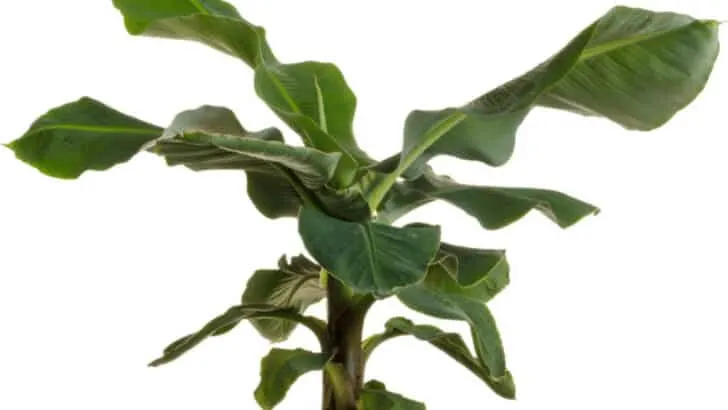Which houseplants are safe for cats and other pets as well as humans?
Quite a few houseplants contain toxic substances that can be dangerous when swallowed or chewed on.
In this article, I will list houseplants that are non-toxic to cats.
The houseplants presented below are all classified as non-toxic by the American Society for the Prevention of Cruelty to Animals (ASPCA).
Table of Contents
Houseplants Safe for Cats
- African Daisy (Gerbera jamesonii)
- Aluminium Plant (Pilea cadierei)
- Bird’s nest fern (Asplenium nidus)
- Boston Fern (Nephrolepis exalta bostoniensis)
- Cushion Aloe (Haworthia retusa)
- Blue Hens and Chicks (Echeveria glauca)
- Nerve plant (Fittonia verschaffeltii)
- Flame African Violet (Episcia reptans)
- Friendship Plant (Pilea involucrata)
- Ghost Plant (Graptopetalum paraguayense)
- Goldfish plant (Hypocyrta)
- Metallic Peperomia (Peperomia caperata)
- Paddys Wig or Baby Tears Plant (Soleirolia soleirolii)
- Pheasant Plant (Cryptanthus zonatus)
- Prayer Plant (Maranta leuconeura)
- Rattlesnake plant (Calathea lancifolia)
- Spider Plant (Chlorophytum comosum)
- Wax plant (Hoya carnosa)
- Peperomia Hope (Peperomia deppeana x quadrifolia)
- Common Wax flower (Hoya Australis)
- Polka Dot Plant(Hypoestes phyllostachya)
- Zebra Plant (Aphelandra squarrosa)
- Purple Velvet Plant or Purple Passion Plant (Gynura aurantiaca)
- Venus Fly Trap (Dionaea muscipula)
- Swedish ivy (Plectranthus australis)
- Christmas cactus (Schlumbergera truncate)
- Guiana Chestnut (Pachira aquatic)
- Cast iron plant(Aspidistra elatior)
- Bamboo palm (Areca palm)
- Air plants (Tillandsia)
- Blue echeveria (Echeveria ‘Blue Atoll’ )
- Baby rubber plant (Peperomia obtusifolia)
- Parlor palm (Chamaedorea elegans)
- Ponytail Palm (Beaucarnea recurvata)
- African violets (Saintpaulia ionantha)
- Watermelon peperomia (Peperomia argyreia)
- Hindu rope plant (Hoya carnosa ‘Compacta’ )
- Hens and chicks (Sempervivum tectorum)
- Peacock Plant (Calathea makoyana)
- Banana tree (Musa acuminata)
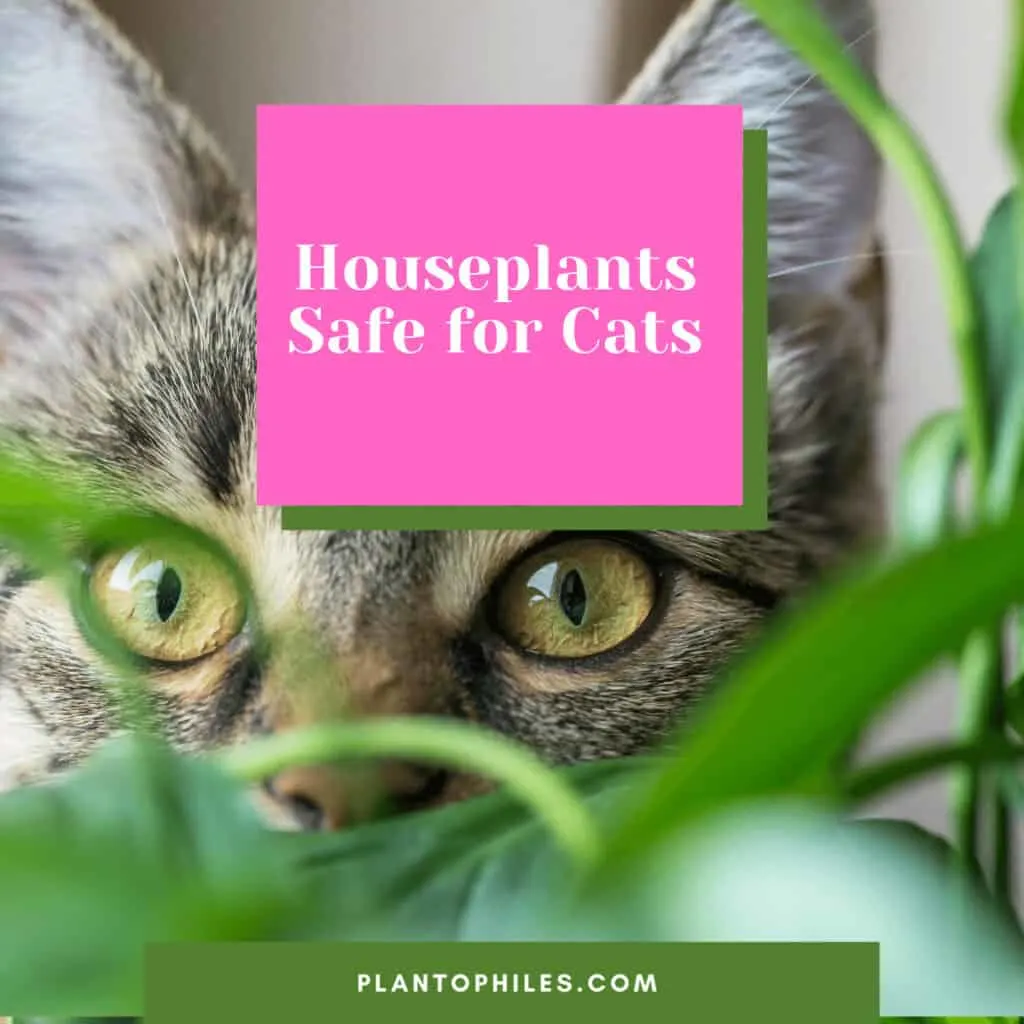
40 Best Cat-Save Indoor Plants
1. African Daisy (Gerbera jamesonii)
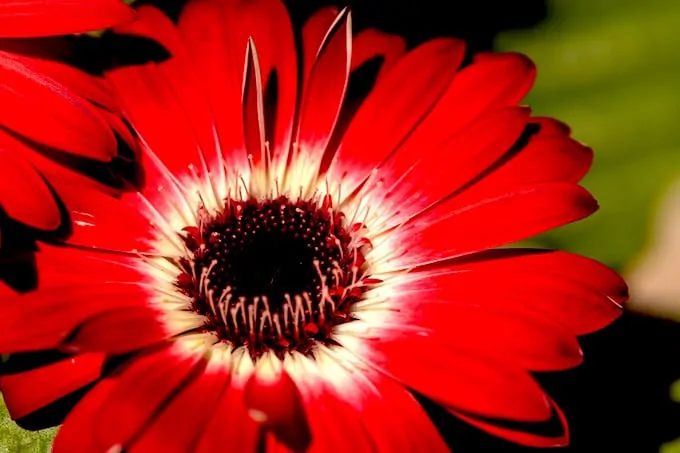
African Daisy (Gerbera jamesonii) is a member of the family Compositae and is non-toxic. Of the 30 different species within that family, some can be kept indoors as potted plants. Gerbera jamesonii is one of them. Most varieties available are hybrids.
Care instructions:
Light: Full sun
Watering: Water 1 inch weekly (2.5cm)
Temperature: 60-90°F (15.6-32°C)
Humidity: 40%
Pot: Drainage holes.
Soil: Rich organic soil. Slightly acidic. pH 5-5.5.
Fertilizer: Slow-release fertilizer for flowers.
2. Aluminium Plant (Pilea cadierei)
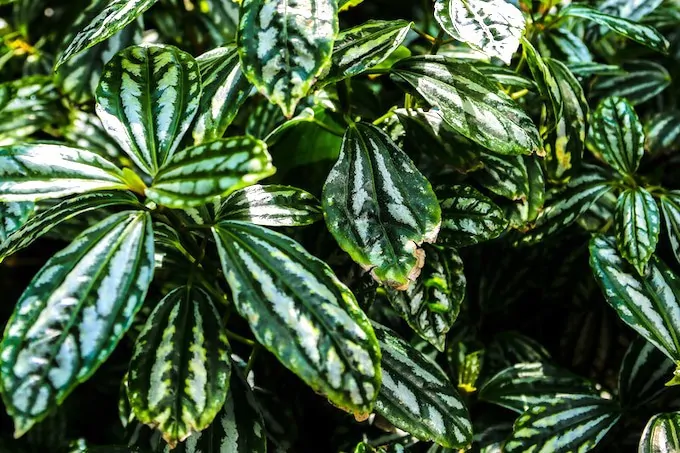
Pilea cadierei, also known as the Aluminium plant and Watermelon Pilea, is an evergreen perennial native to tropical Southeast Asian rainforests. They can be found in tropical China as well as in Vietnam. The Aluminium plant is related to Pilea Peperiomides, a.k.a the Chinese Money Plant. The plant can grow up to 12 inches high (30cm). Grows best in a warm climate. This low-maintenance houseplant is ideal for both indoor and outdoor.
Moreover, it only requires minimal care and does not pose any threats to your cat. It is completely non-toxic to both cats & dogs.
Care instructions:
Light: Bright indirect.
Watering: Water once a week.
Temperature: 60-75°F (15.6-24°C)
Humidity: 60-90%
Pot: Drainage holes.
Soil: Use a sandy soil mix.
Fertilizer: Balanced fertilizer once a month in spring and summer.
3. Bird’s nest fern (Asplenium nidus)
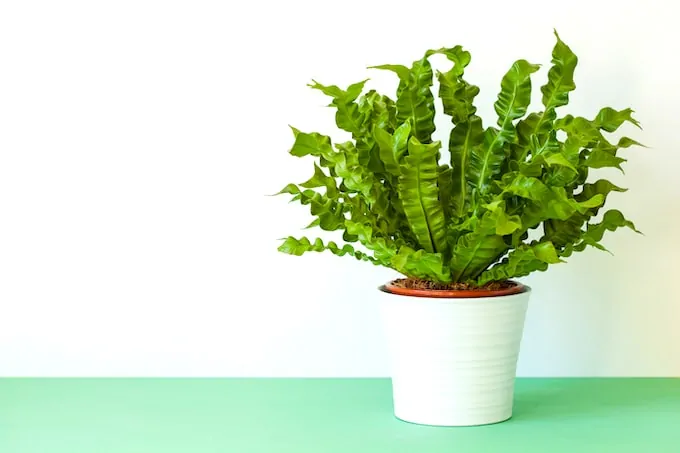
Ferns are generally considered to be very picky houseplants. Bird’s nest fern (Asplenium nidus) is one of the easier ferns to care for. And on top of that, its non-toxicity towards cats makes this fern even better.
The consensus with Maidenhair ferns is that they are also non-toxic to cats.
As the ASPCA states, Staghorn ferns are pet-safe (cats, dogs & horses).
Asparagus ferns, however, are toxic to cats. So if you have a kitty at home, don’t go for Asparagus ferns.
Care instructions:
Light: Bright indirect.
Watering: Water once a week indoors and daily outdoors.
Temperature: 70-90°F (21-32°C)
Humidity: 75-90%
Pot: Drainage holes.
Soil: Use a peat and sand mix.
Fertilizer: Every 3-4 weeks in spring and summer. Use a balanced liquid fertilizer.
4. Boston Fern (Nephrolepis exalta bostoniensis)
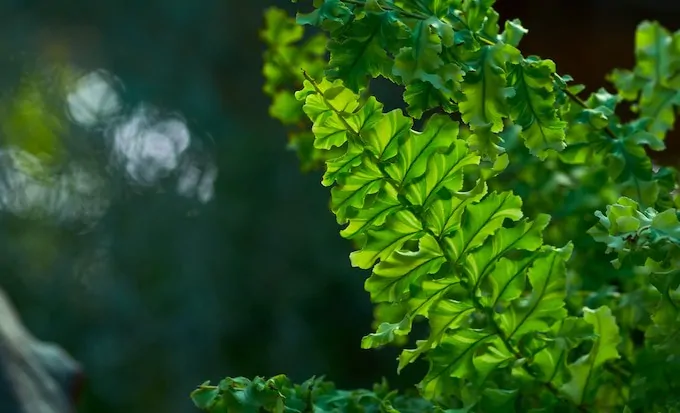
Ferns are among the oldest plants in the world. Moreover, with their long, attractive fronds, they are true eye candy and can be grown both outdoors and indoors. The Boston fern is certainly no different.
However, it needs to be said that ferns are not exactly low-maintenance, and if you are new to houseplants, you might want to start with something easier.
It has the advantage of being pet-safe. Other ferns are cat-approved Bold Sword fern, Bird’s Nest fern, Ball fern, Common Staghorn Fern, and Dallas Fern.
Some ferns, however, are also toxic to cats, such as the Asparagus fern (Asparagus densiflorus cv sprengeri).
Care instructions:
Light: Bright indirect.
Watering: Water once every 7-14 days.
Temperature: 65-95°F (18.3-35°C)
Humidity: 75-90%
Pot: Drainage holes.
Soil: Use a peat and sand mix.
Fertilizer: Monthly in spring and summer. Use a balanced liquid fertilizer.
5. Cushion Aloe (Haworthia retusa)
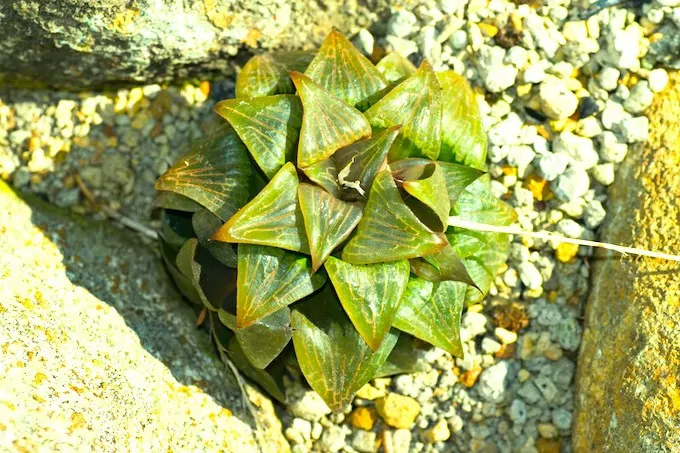
Cushion Aloe, a.k.a Haworthia retusa, is non-toxic to cats. This is the case for most Haworthia.
This perennial succulent calls Riversdale, South Africa it’s home. In Riversdale and surrounding areas, you can find this succulent on almost every hill.
Haworthia retusa are often advertised as cacti, but the Cushion Aloe is not a succulent.
Care instructions:
Light: Light shade.
Watering: Water once every 14-21 days.
Temperature: 60-90°F (15.6-32.2°C)
Humidity: 40%
Pot: Drainage holes.
Soil: Use a succulent or cactus mix.
Fertilizer: Every two months in spring and summer. Use a balanced liquid fertilizer.
6. Blue Hens and Chicks (Echeveria glauca)
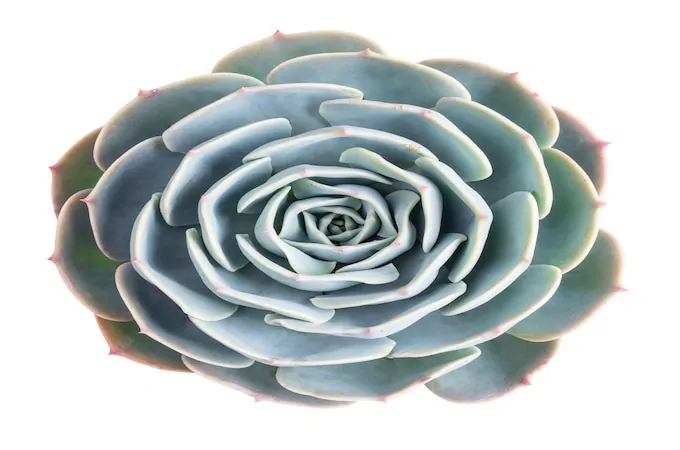
The natural home of Echeveria is Texas, Mexico, Central America, and South America.
While this succulent thrives extraordinarily well in arid mountainous regions, it is possible to keep it as a houseplant. The Blue Hens and Chicks are known to be cat-friendly and are also non-toxic to both dogs and horses.
Care instructions:
Light: Bright filtered light
Watering: Once the soil dries out several inches deep.
Temperature: 65-70°F (18-21°C)
Humidity: 40%
Pot: Drainage holes.
Soil: Use a succulent or cactus mix.
Fertilizer: Every once a month in spring and summer. Use a balanced liquid fertilizer.
7. Nerve plant (Fittonia verschaffeltii)
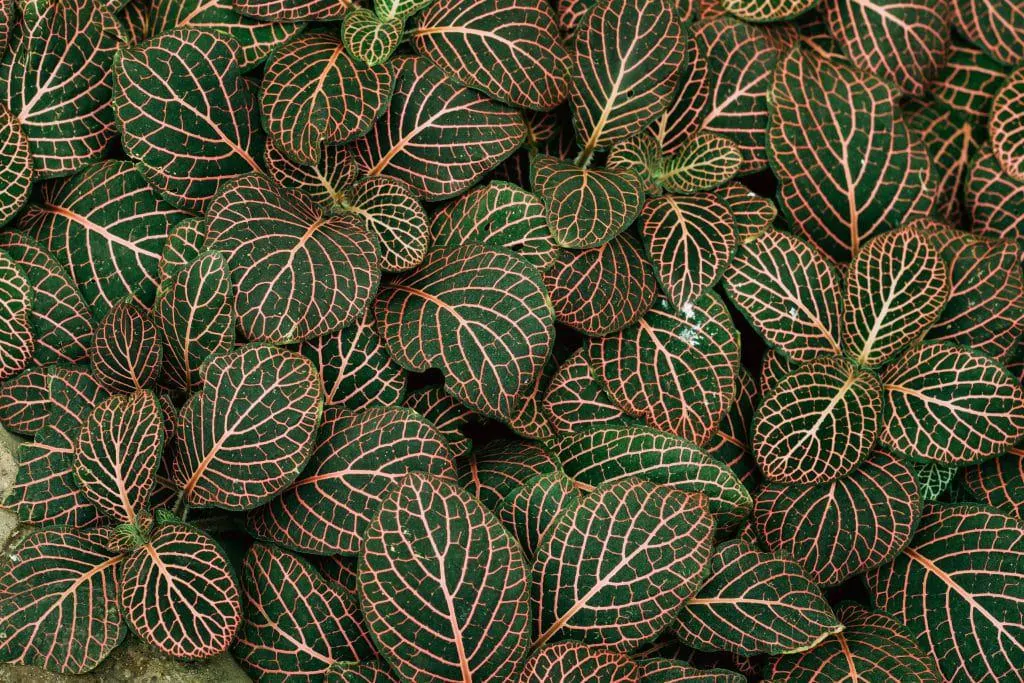
The natural habitat of Nerve plants is the tropical forests of South America. This plant can also thrive indoors, for example, in a terrarium.
This plant is not harmful to cats as stated by the ASPCA.
Care instructions:
Light: Bright, indirect light.
Watering: Every 3-4 days. Prefers moist but not soggy soil.
Temperature: 65-80°F (18-26.7°C)
Humidity: 60-70%
Pot: Drainage holes.
Soil: General potting mix. Slightly acidic with a pH of 6.5.
Fertilizer: Every once a month in spring and summer. Use a general houseplant fertilizer.
8. Flame African Violet (Episcia reptans)
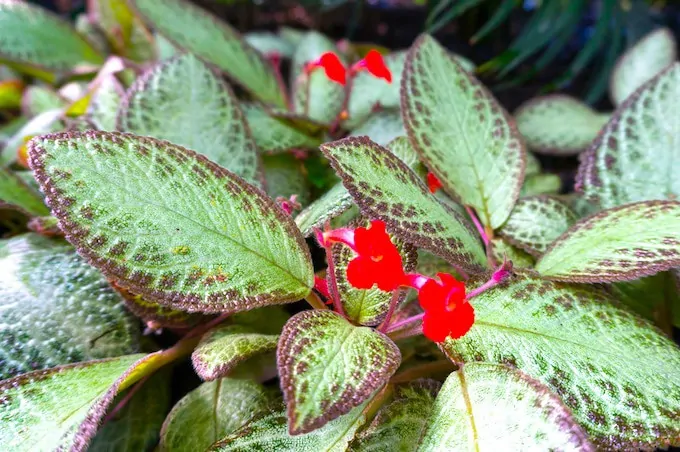
Episcia reptans is a member of the family Gesneriaceae and is another beautiful houseplant classified as non-toxic by the ASCPA.
Episcia reptans are flowering plants that are often grown in the tropics. In temperate regions, however, you’ll also often find them as houseplants.
Episcia is not exactly the easiest houseplant to grow and cultivate.
Other beautiful species of the family Gesneriaceae are Episcia dianthiflora (Chocolate Soldier) and Episcia cultivar (Pink Brocade).
Care instructions:
Light: Bright, indirect light.
Watering: Every 1-2 times a week. Prefers moist soil.
Temperature: 65-80°F (18-26.7°C)
Humidity: 60-70%
Pot: Drainage holes.
Soil: General potting mix. Slightly acidic with a pH of 6.5.
Fertilizer: Every once a month in spring and summer. Use a general houseplant fertilizer.
9. Friendship Plant (Pilea involucrata)
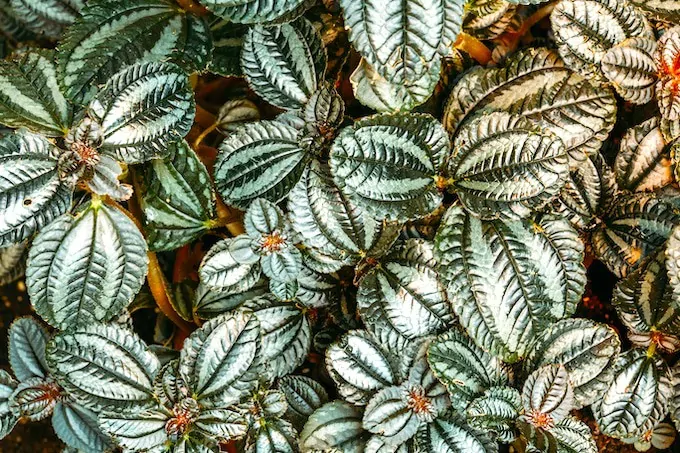
Pilea involucrata, or Moon Valley Pilea is another great addition to your urban jungle, even if you have cats lurking around.
This pet-safe Pilea does look great, is classified as low-maintenance, and is very easy to propagate. Pileas are generally among the safest plants for pets. You could also go for a Creeping Pilea, Pilea mycrophylla, or even a Pilea peperiomides.
Care instructions:
Light: Bright, indirect light.
Watering: Water once a week. Likes to dry out in-between waterings.
Temperature: 65-75°F (18-24°C)
Humidity: 60-90%
Pot: Drainage holes.
Soil: General potting mix. Slightly acidic with a pH of 6.5.
Fertilizer: Monthly in spring and summer. Use a well-balanced liquid fertilizer.
10. Ghost Plant (Graptopetalum paraguayense)
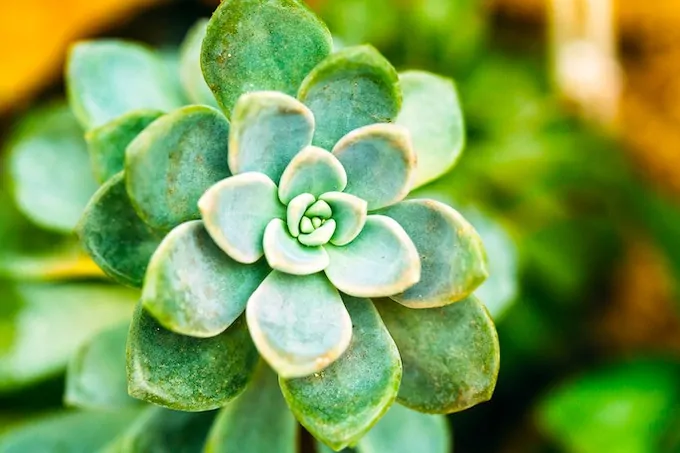
The Ghost plant (Graptopetalum paraguayense) is not toxic to animals and humans.
The ghost plant, or “Mother of Pearl,” is native to Mexico.
This succulent plant likes bright locations with plenty of direct sunlight all year round. A sunny and warm location at a south window is usually a great choice.
Check out our plant care guide about this lovely succulent: Ghost Plant Plant Care Guide.
Care instructions:
Light: Full sun to partial sun
Watering: Water once a week outdoors. Water indoors every two weeks.
Temperature: 60-80°F (16-27°C)
Humidity: 60-90%
Pot: Pot with drainage holes.
Soil: Light and airy potting mix containing sand.
Fertilizer: Monthly in the growing season. Use a well-balanced liquid fertilizer at 1/2 strength.
11. Goldfish plant (Hypocyrta)
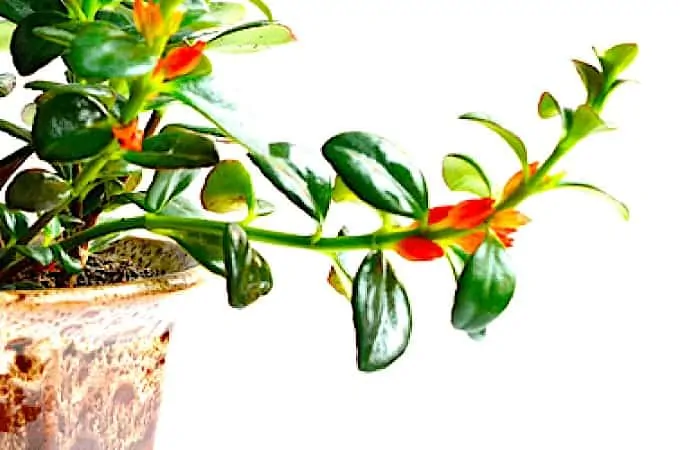
Goldfish plants are non-toxic to animals. learn everything about the care for Goldfish plants. Do not overwater, or else the leaves will start to fall off.
Care instructions:
Light: Bright indirect light.
Watering: Water once a week. It likes to dry out.
Temperature: 65-85°F (18-29.4°C)
Humidity: 50-70%
Pot: Pot with drainage holes.
Soil: Regular potting mix. Does not need fertile soil.
Fertilizer: High phosphorus liquid fertilizer every two weeks. Use 1/2 the recommended strength.
12. Metallic Peperomia (Peperomia caperata)
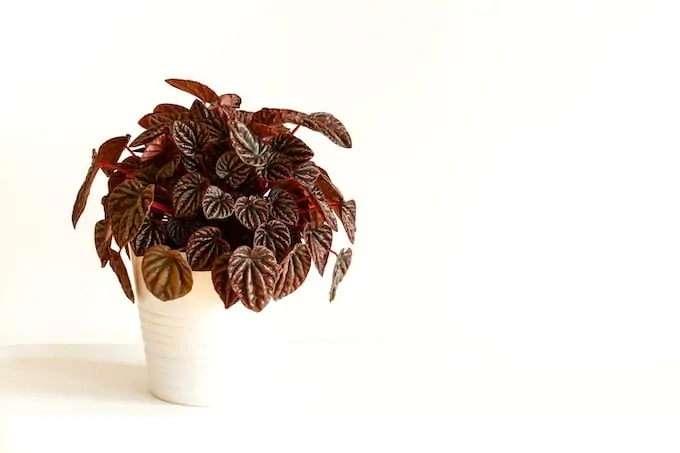
Plants of the genera Peperomia are generally a cat’s best friend cause they are all classified as non-toxic by the ASPCA.
The Metallic Peperomia (Peperomia caperata) is no exception.
Care instructions:
Light: Low to medium light. Avoid direct light
Watering: Water once a week. Let the top 1/2 inch of soil dry out in between (1.27cm).
Temperature: 60-80°F (15.6-26.7°C)
Humidity: 40-50%
Pot: Pot with drainage holes.
Soil: Loose soil containing perlite.
Fertilizer: Once a month in the growing season. Use a liquid fertilizer at 1/2 the recommended strength.
13. Paddys Wig (Soleirolia Soleirolii)
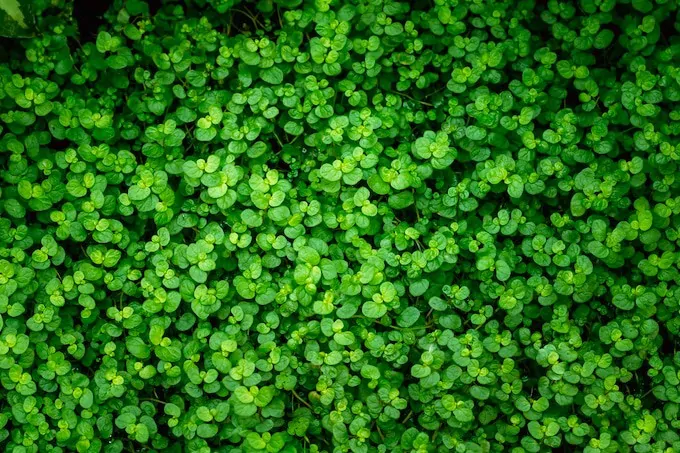
Paddys Wig, also known as Angel’s or Baby’s tears or Soleirolia Soleirolii, s another cat-friendly plant you can grow indoors. it grows well in a bucket-like container or even in a terrarium.
One of the reasons why this houseplant is so popular is because it is very low maintenance.
Another good reason Angel’s tears (some also call it Baby’s tears) makes for a decent houseplant is their non-toxic nature.
Care instructions:
Light: Bright indirect light. Avoid direct light.
Watering: Water once a week.
Temperature: 60-65°F (15.6-18.3°C)
Humidity: 60-70%
Pot: Pot with drainage holes.
Soil: Rich organic and well-draining soil.
Fertilizer: Fertilize every two weeks in the growing season. Use a liquid fertilizer.
14. Pheasant Plant (Cryptanthus zonatus)
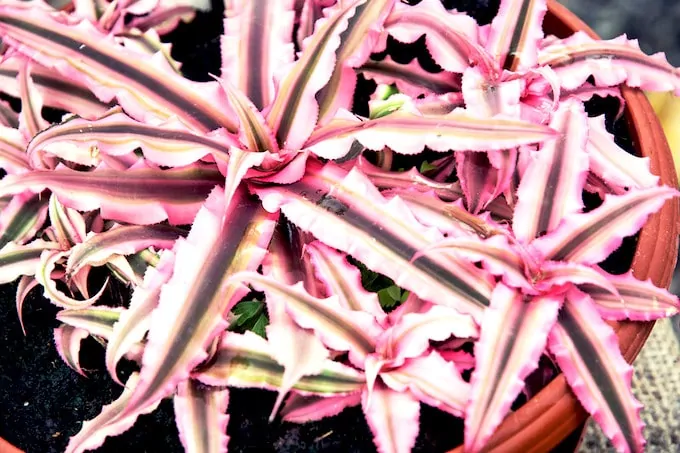
Cryptanthus zonatus is not classified as toxic per the ASCPA. The Pheasant plant has an interesting look. Its colors get more vibrant with increased lighting.
Care instructions:
Light: Bright indirect light.
Watering: Water every 7-10 days. Prefers moist soil.
Temperature: 60-85°F (15.6-29.4°C)
Humidity: 70-90%
Pot: Pot with drainage holes.
Soil: Peat-based acidic soil.
Fertilizer: Diluted liquid fertilizer once a month in spring and summer.
15. Prayer Plant (Maranta leuconeura)
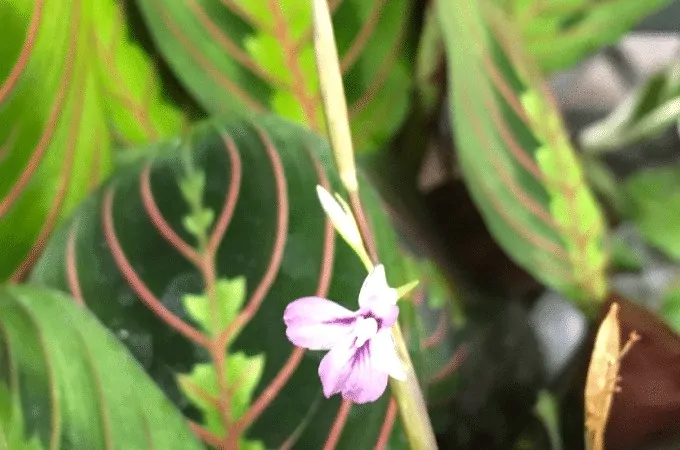
The beautiful Maranta Leuconeura plant. This houseplant belongs to the family of Marantaceae. It encompasses the Calathea genus. And Calatheas are generally very cat-friendly.
Care instructions:
Light: Bright, indirect light.
Watering: Water every 7-14 days. Prefers filtered water.
Temperature: 65-70°F (18.3-21.1°C)
Humidity: 60-75%
Pot: Pot with drainage holes.
Soil: Perlite, potting soil, coconut coir, sphagnum moss.
Fertilizer: Diluted liquid fertilizer every two weeks in spring and summer.
16. Rattlesnake plant (Calathea lancifolia)
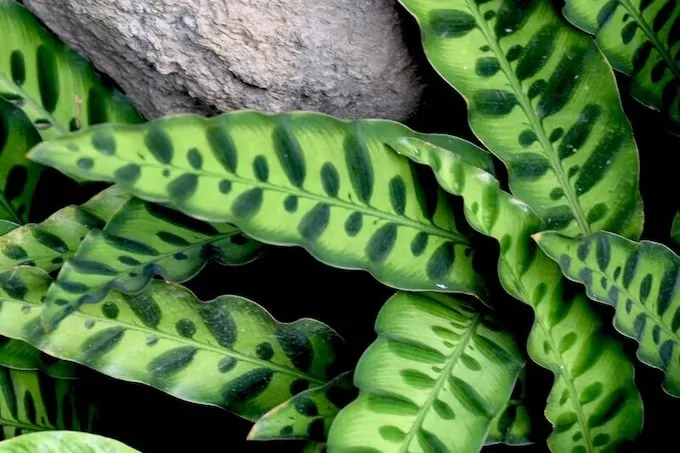
The Rattlesnake plant is classified as cat-safe by the ASPCA.
Care instructions:
Light: Bright, indirect light. Keep the plant away from direct light.
Watering: Water every 7-14 days. Prefers filtered water.
Temperature: 65-75°F (18.3-23.9°C)
Humidity: 50-70%
Pot: Pot with drainage holes.
Soil: Loose, organic soil.
Fertilizer: Diluted liquid fertilizer at 1/2 strength once a month.
17. Spider Plant (Chlorophytum commosum)
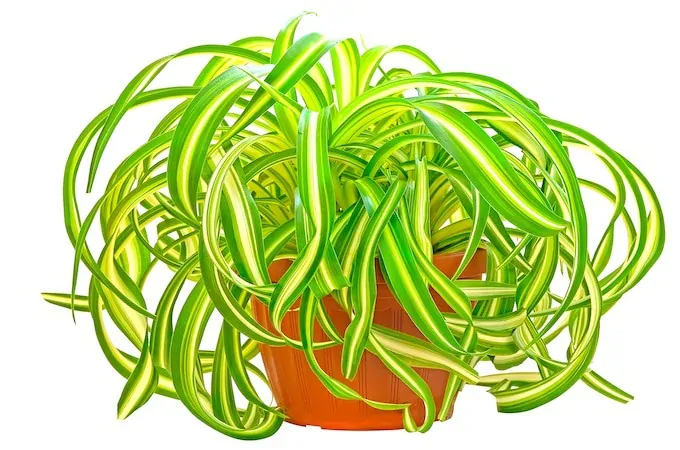
Chlorophytum is considered pet-safe by the ASPCA, including cats & dogs.
But that doesn’t mean that you should let your cat feast on this beauty for dinner, as chewing, or worse, eating larger amounts of the Spider Plant could still result in an upset stomach or showing other signs of discomfort.
Care instructions:
Light: Bright, indirect light. 6-8 hours is optimal.
Watering: Water every seven days. Keep the soil slightly moist. Prefers filtered water.
Temperature: 60-75°F (15.6-23.9°C)
Humidity: 50-70%
Pot: Pot with drainage holes.
Soil: Loamy soil using clay and sand.
Fertilizer: Use an all-purpose fertilizer once a month during the growing months.
18. Wax plant (Hoya carnosa)
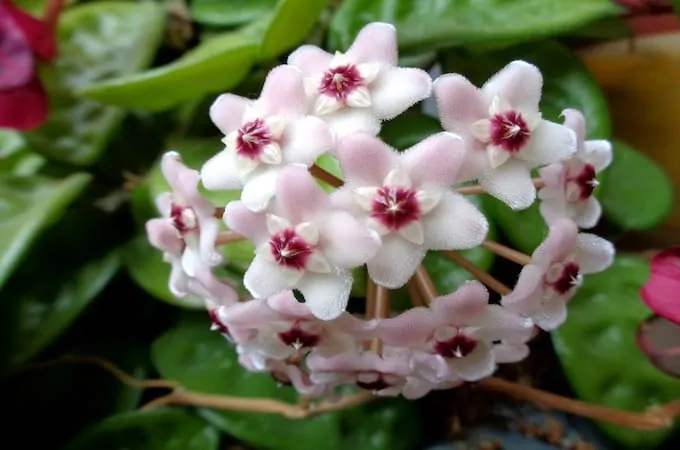
Wax pants belong to the family of Apocynaceae and call Eastern Asia and Australia home.
Hoya Carnosa is a common houseplant, mainly grown for its attractive waxy foliage and because it is pet-safe.
Care instructions:
Light: Bright, indirect light.
Watering: Water every fourteen days.
Temperature: 64-75°F (17.8-23.9°C)
Humidity: 60-70%
Pot: Pot with drainage holes.
Soil: Mix a cactus and an orchid mix.
Fertilizer: 1-2 times a month using a fertilizer high in nitrogen.
19. Peperomia Hope
Sieh dir diesen Beitrag auf Instagram an
Peperomia or also called Baby Rubber plants are beautiful plants from the family Piperaceae.
Piperaceae is the pepper family and consists of more than 3’600 species.
Peperomia plants are safe for cats and dogs, according to the ASPCA.
Peperomia Hope (Peperomia deppeana x quadrifolia) is no exception.
Care instructions:
Light: Bright, indirect light.
Watering: Water every fourteen days.
Temperature: 64-75°F (17.8-23.9°C)
Humidity: 60-70%
Pot: Pot with drainage holes.
Soil: Mix a cactus and an orchid mix.
Fertilizer: 1-2 times a month using a fertilizer high in nitrogen.
20. Hoya Australis
Sieh dir diesen Beitrag auf Instagram an
Hoya Australis is among the most popular in the Hoya genus consisting of more than 5000 species.
This is unsurprising as Hoya Australis is easy to care for and thrives on neglect.
In addition, this houseplant is nontoxic.
Care instructions:
Light: Bright, indirect light.
Watering: Water every fourteen days.
Temperature: 64-75°F (17.8-23.9°C)
Humidity: 60-70%
Pot: Pot with drainage holes.
Soil: Mix a cactus and an orchid mix.
Fertilizer: 1-2 times a month using a fertilizer high in nitrogen.
21. Polka Dot Plant (Hypoestes phyllostachya)
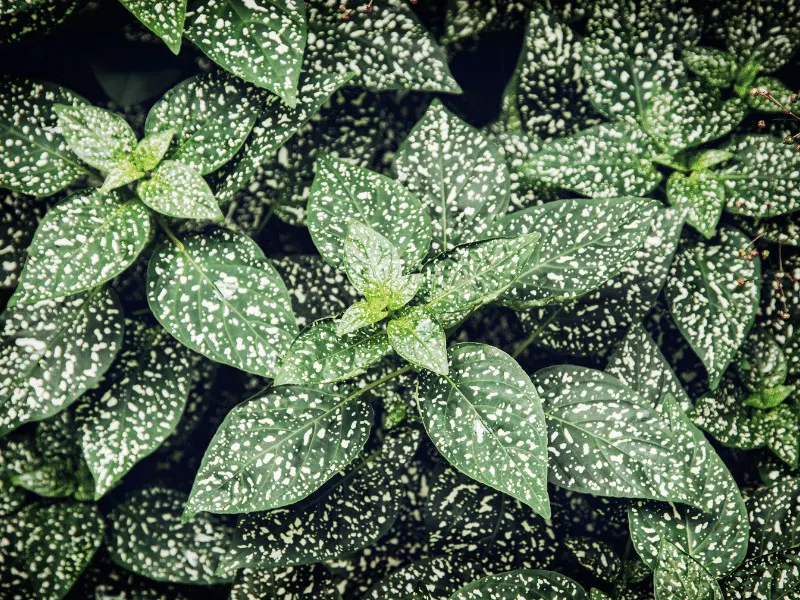
The Polka Dot plant is mostly grown for its foliage. It comes in many colors from red to pink to white. Hypoestes phyllostachya is easy to care for and a low-maintenance plant.
Care instructions:
Light: Bright indirect light. Avoid direct sunlight.
Watering: Prefers slightly moist soil. Water once the top 1-inch of soil dries out.
Temperature: 60-75 °F (15.6-24°C)
Humidity: Around 50%
Pot: Pot with drainage holes
Soil: Well-draining soil with added perlite and pumice
Fertilizer: 2-4 times a month using a balanced liquid fertilizer at 1/2 strength.
22. Zebra Plant (Aphelandra squarrosa)
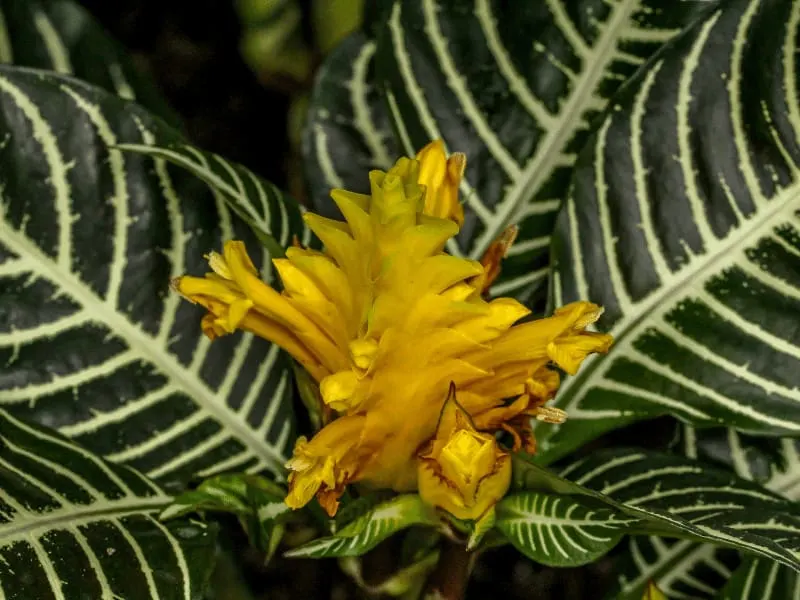
The Zebra plant is native to Brazil and is one of the plants safe for cats. It has striking green foliage with yellow stripes. It produces fragrant flowers.
Care instructions:
Light: Avoid direct light. Bright indirect light from a wester- or eastern-facing window.
Watering: Prefers moist soil. Water once the top 1-inch of soil dries out.
Temperature: 68-77 °F (20-25°C)
Humidity: Around 50%
Pot: Pot with drainage holes to prevent root rot.
Soil: Well-draining rich potting mix containing peat moss.
Fertilizer: Fertilize weekly using a balanced liquid fertilizer.
23. Purple Velvet Plant or Purple Passion Plant (Gynura aurantiaca)
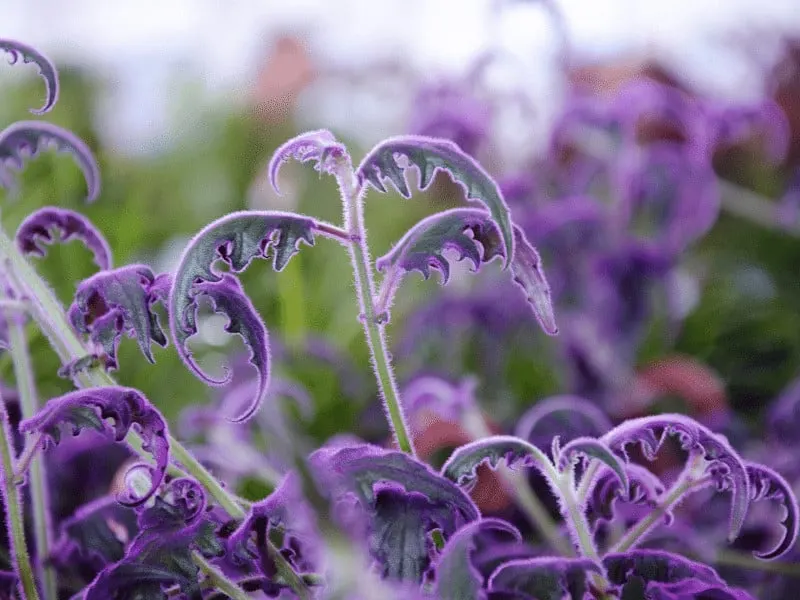
The Purple Passion Plant is native to Indonesia. It is one of those house plants that are safe for cats. they have purple leaves that have a velvety look. They even thrive under low light.
Care instructions:
Light: Bright indirect light from an east-or west-facing window.
Watering: Water once a week. Prefers slightly moist soil. Allow the top 1 inch (2.5cm) to dry out before watering.
Temperature: 60-70 °F (15.6-21°C)
Humidity: 40-60%
Pot: Likes to be root-bound in small pots
Soil: General potting soil
Fertilizer: Fertilize once a month during the growing season. Use a balanced fertilizer at 1/2 strength.
24. Venus Fly Trap (Dionaea muscipula)
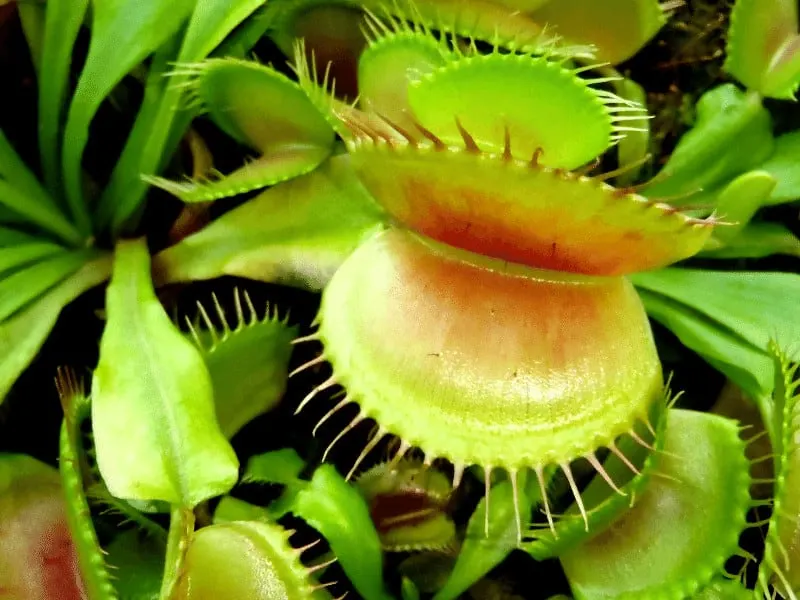
The Venus fly trap is a safe plant. It is a carnivorous plant. It grows in North and South Carolin. It is cat safe. But not safe for insects.
Care instructions:
Light: Full sunlight. A south-facing window is optimal.
Watering: Use rainwater or distilled water. Keep constantly moist-
Temperature: 60-70 °F (15.6-21°C)
Humidity: 40-60%
Pot: Use a small plastic or ceramic pot
Soil: Needs a well-draining mix. A combination of peat moss, perlite, and sand is optimal.
Fertilizer: Do not fertilize. Nutrient intake happens from insects.
25. Swedish ivy (Plectranthus australis)
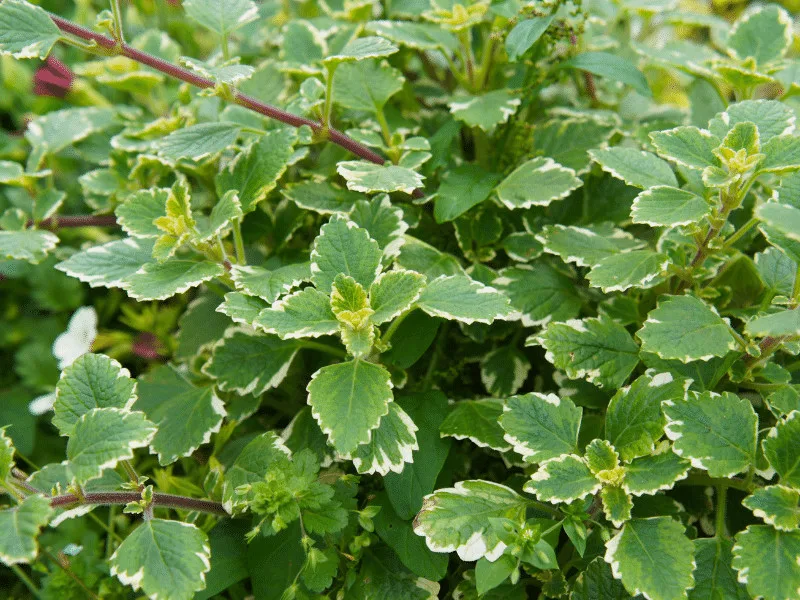
Swedish ivy is safe for pets. It is a herbaceous perennial. It is a fast-growing plant. It also goes by Swedish begonia, according to Missouri Botanical Garden.
Care instructions:
Light: Bright indirect sun. Tolerates lower light levels.
Watering: Water once a week. Prefers slightly moist soil. Allow the top 2-3-inches (5.0-7.5cm) to dry out before watering.
Temperature: 70-75 °F (21-24°C). Grows in USDA Hardiness zone 10-11
Humidity: 40-60%
Pot: Likes to be root-bound in small pots
Soil: General potting soil. The ideal pH is 5.5 and 6.5
Fertilizer: Fertilize once a month during the growing season. Use a balanced fertilizer at 1/2 strength.
26. Christmas cactus (Schlumbergera truncate)
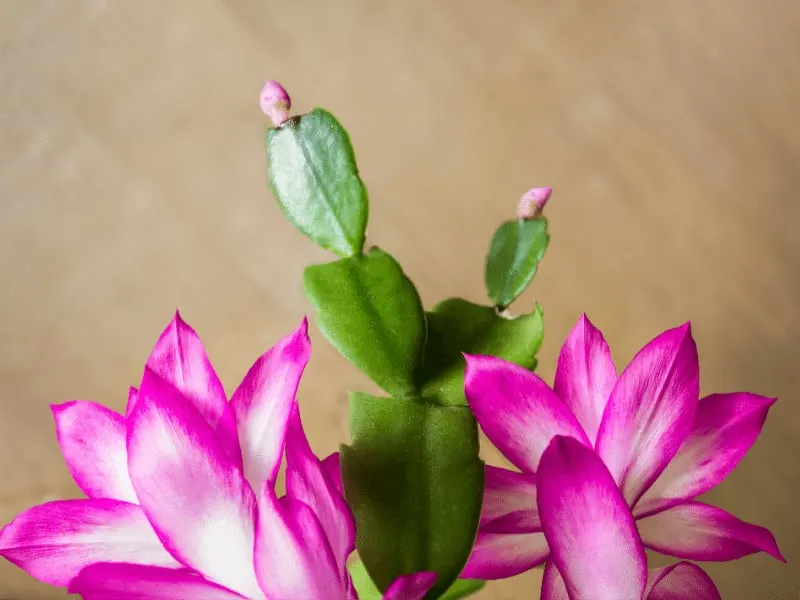
The Christmas cactus is a plant native to Brazil. It grows in the coastal regions of Rio de Janeiro and Sao Paulo. It belongs to the Cactaceae family but prefers more humidity than most cacti. It is usually bought during the holiday season. it is a perennial if you care for it well.
Care instructions:
Light: Bright indirect light. Avoid direct sunlight.
Watering: Water every 2-3 weeks once the soil is dry.
Temperature: 60°F to 70°F (16°C – 21°C)
Humidity: 50-60%
Pot: Pot with draining holes
Soil: Well-draining soil using potting soil compost, perlite, and milled peat.
Fertilizer: Fertilize every 2-3 weeks in spring and summer
27. Guiana Chestnut (Pachira aquatic)
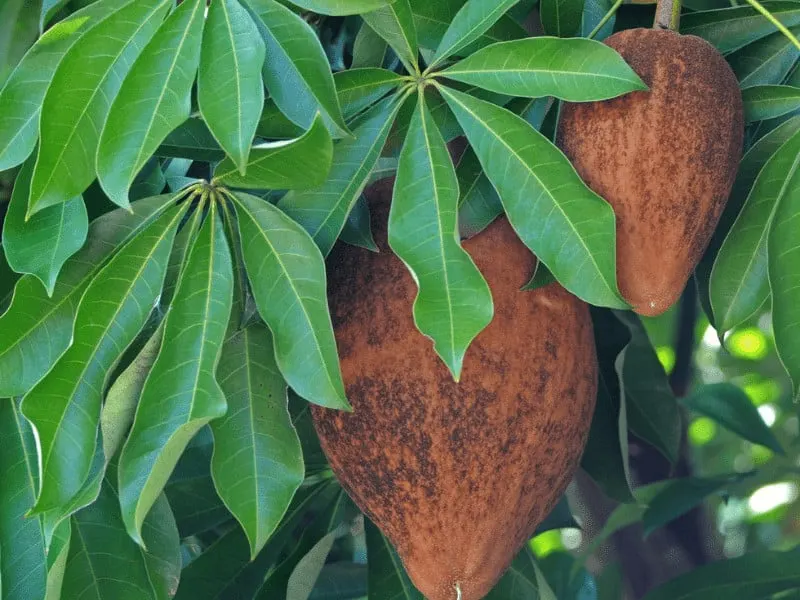
The Guiana Chestnut or Pachira aquatica is known for its foliage. It is also known as the Money tree and is easy to care for. It is one of the house plants safe for cats.
Care instructions:
Light: Bright indirect.
Watering: Water 1-2 times per week.
Temperature: 65°F to 80°F (18°C – 26.7°C)
Humidity: 50%
Pot: Pot with drainage holes
Soil: Well-draining soil using vermiculite, sand, peat moss, or perlite.
Fertilizer: Fertilize once a month using a balanced houseplant fertilizer
28. Cast iron plant (Aspidistra elatior)
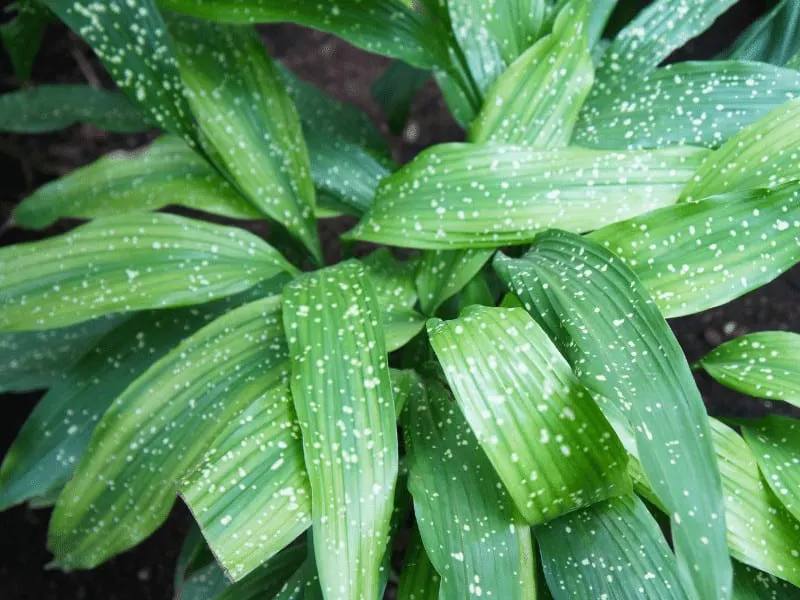
This plant produces large and glossy leaves. It. originates in Japan and Taiwan. This plant thrives on neglect. It is one of many nontoxic houseplants.
Care instructions:
Light: Indirect sunlight. Avoid direct sun.
Watering: Water every 89 days once the soil is completely dry.
Temperature: 65°F to 85°F (18°C – 29.4°C)
Humidity: 40% or less
Pot: Pot with drainage holes
Soil: Rich organic soil between neutral and acidic
Fertilizer: Once a month from spring to summer. Use a balanced fertilizer.
29. Bamboo palm (Areca palm)
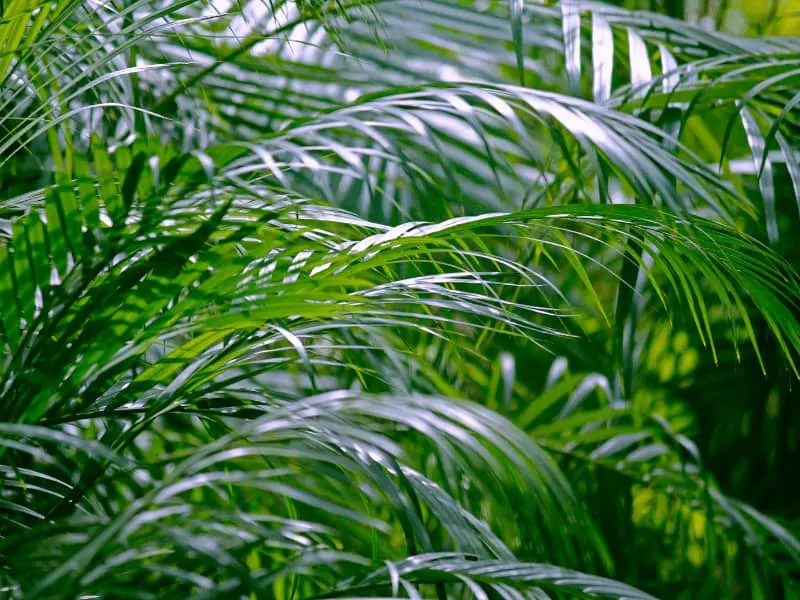
The Areca palm is a plant with delicate foliage. The leaves or fronds are arching upwards. It adds jungle vibes to any apartment. It has a rightful spot in the list of houseplants that are safe for pets.
Care instructions:
Light: Partial sunlight.
Watering: Water every 7-14 days once the soil is completely dry.
Temperature: 65°F to 75°F (18°C – 24°C)
Humidity: 50-70%
Pot: Pot with drainage holes
Soil: Soil containing one part perlite, one part pine bark, and one part coarse potting soil.
Fertilizer: Once a month, use a fertilizer low in phosphorus and high in nitrogen and potassium
30. Air plants (Tillandsia)
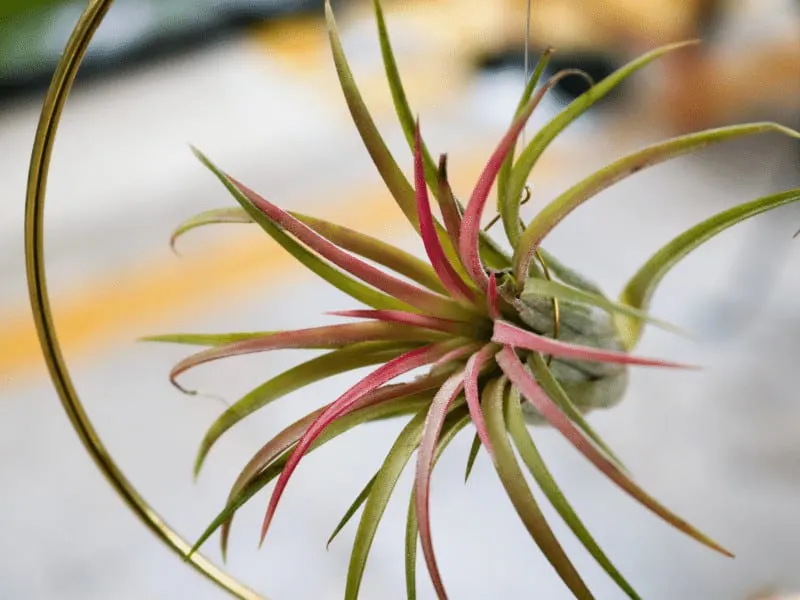
Tillandsia are not plants that are toxic to people and animals. The Air plants are cat and dog safe. They are easy to grow indoors. They have specific care needs.
Care instructions:
Light: Indirect sunlight. Avoid direct sun.
Watering: Water every 89 days once the soil is completely dry.
Temperature: 50°F to 90°F (10°C – 32°C)
Humidity: 50-70%
Pot: They do not need a pot and can be attached to objects.
Soil: Don’t need soil
Fertilizer: Use an orchid fertilizer low in copper once a month.
31. Blue echeveria (Echeveria ‘Blue Atoll’ )
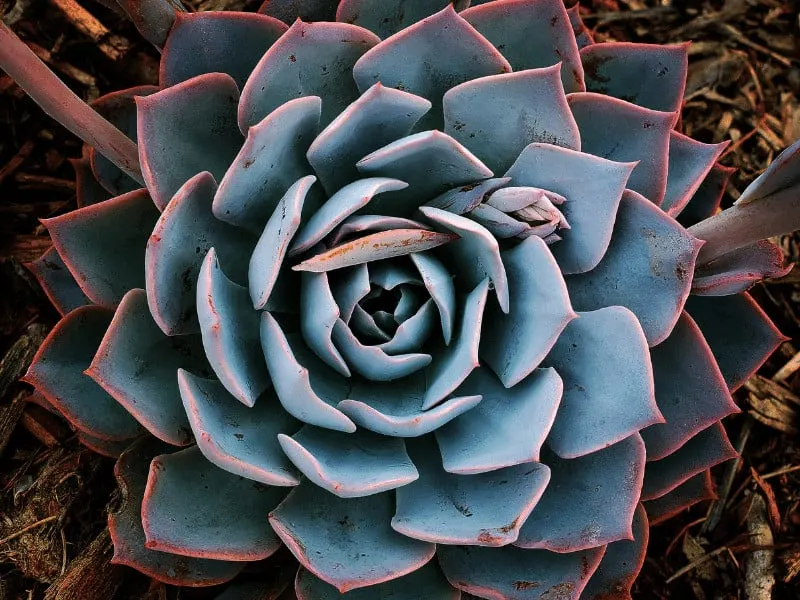
Echeveria ‘Blue Atoll’ is a succulent that forms a rosette. Blue echeveria is not toxic to pests. They do not contain any harmful substances.
Care instructions:
Light: Direct light.
Watering: Water every 7-10 days once the soil is dry.
Temperature: 55°F to 80°F (12.8°C – 27°C)
Humidity: 40-50%
Pot: Terracotta pot with drainage holes
Soil: Well-draining soil. Cactus mix
Fertilizer: Once a month. Use a fertilizer low in nitrogen and phosphorus, and potassium, such as NPK 5-10-5
32. Baby rubber plant (Peperomia obtusifolia)
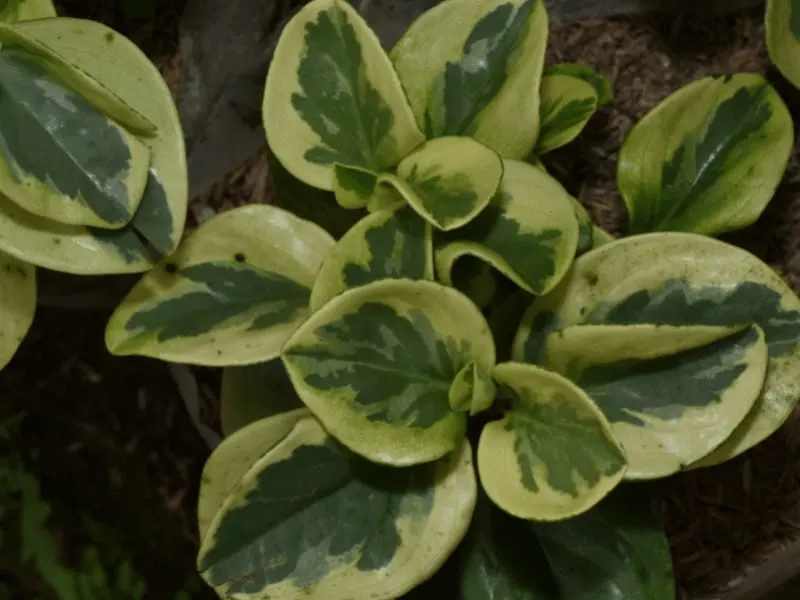
The baby rubber plant or Pepper plant is one of the indoor plants safe for cats. The rubber plant (Ficus elastica), on the other hand, is not safe for your pet.
Care instructions:
Light: Indirect light.
Watering: Water every 1-2 weeks once the soil is dry to the touch
Temperature: 65°F to 75°F (18°C – 24°C)
Humidity: 50%
Pot: Likes to be potbound.
Soil: Well-draining mix. Coco coir works well.
Fertilizer: Once a month. Use a well-balanced fertilizer at 1/2 strength.
33. Parlor palm (Chamaedorea elegans)
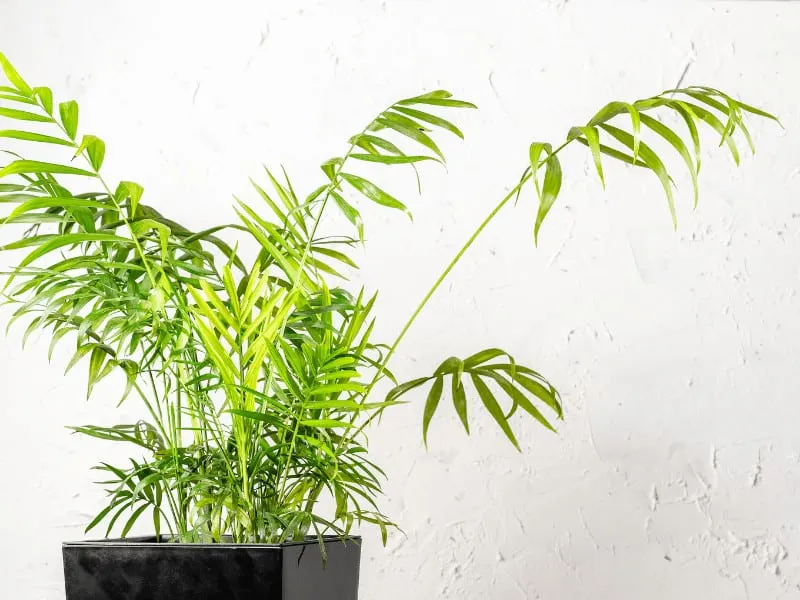
Some palms are toxic, but the parlor palm is not toxic to pets. It is also known as Neanthe Bella Palm. It is a true palm and has striking green foliage.
Care instructions:
Light: Bright indirect sunlight.
Watering: Water every 1-2 weeks.
Temperature: 60°F to 80°F (16°C – 27°C)
Humidity: 40-50%
Pot: Needs drainage holes.
Soil: Multi-purpose soil.
Fertilizer: Monthly. Use a liquid fertilizer.
34. Ponytail Palm (Beaucarnea recurvata)
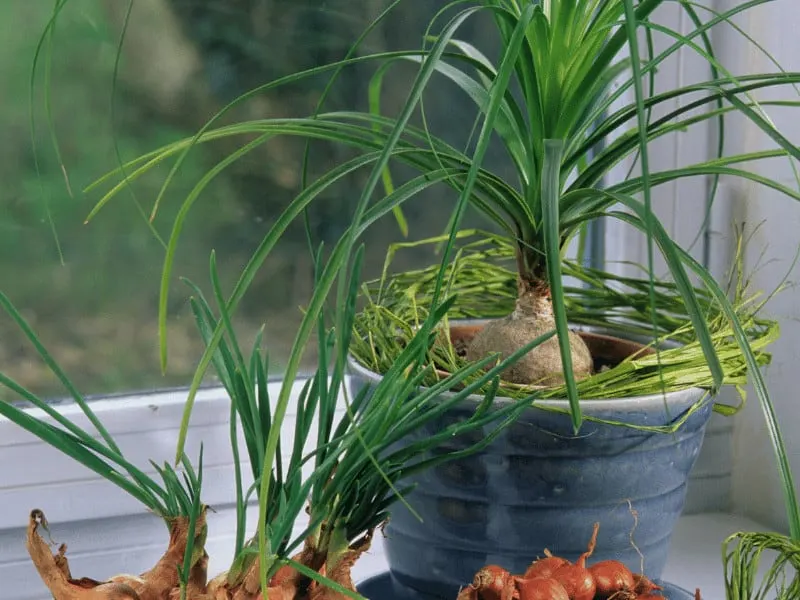
This plant is easy to care for and safe. It is not a toxic plant for children and pets. It belongs to the succulent family Asparagaceae.
Care instructions:
Light: Bright light.
Watering: Water every two weeks.
Temperature: 65°F to 75°F (18°C – 24°C)
Humidity: 40-60%
Pot: Needs drainage holes.
Soil: Well-draining succulent soil.
Fertilizer: Monthly. Use a liquid fertilizer.
35. African violets (Saintpaulia ionantha)
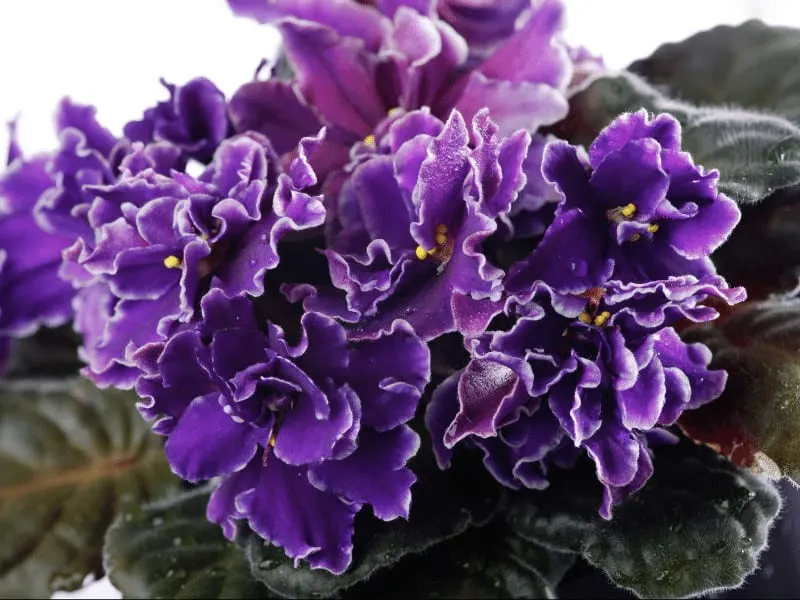
Many houseplants are not safe. It is great to know that African violets are safe for pets and humans. They produce purple, white, and blue flowers and are one of the most popular plants worldwide.
Care instructions:
Light: Indirect sunlight
Watering: Water about once a week. Let the soil dry out before.
Temperature: 65°F to 75°F (18°C – 24°C)
Humidity: 40-60%
Pot: Needs drainage holes.
Soil: Well-draining succulent soil.
Fertilizer: Monthly. Use a liquid fertilizer.
36. Watermelon peperomia (Peperomia argyreia)
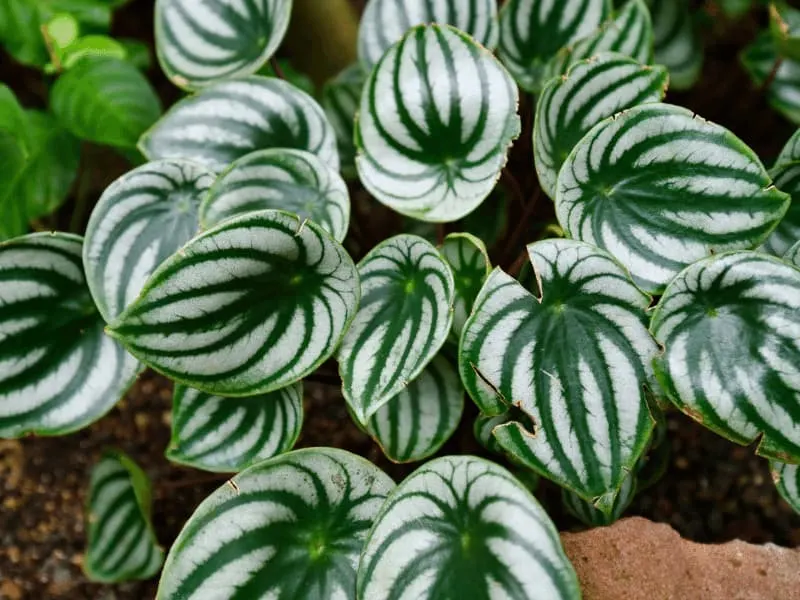
Peperomia is easy to grow as an indoor plant. The watermelon peperomia is stunning to look at. Its foliage resembles a watermelon. The leaves have white to gray lines on their upper side.
Care instructions:
Light: Medium-bright light
Watering: Water every 7-12 days. Let the soil dry out before watering again.
Temperature: 55°F to 80°F (12.8°C – 26.7°C)
Humidity: 50%
Pot: Needs drainage holes.
Soil: Mixture of peat moss and perlite
Fertilizer: Fertilize monthly during the main growth phase with an NPK 20-20-20 fertilizer.
37. Hindu rope plant (Hoya carnosa ‘Compacta’)
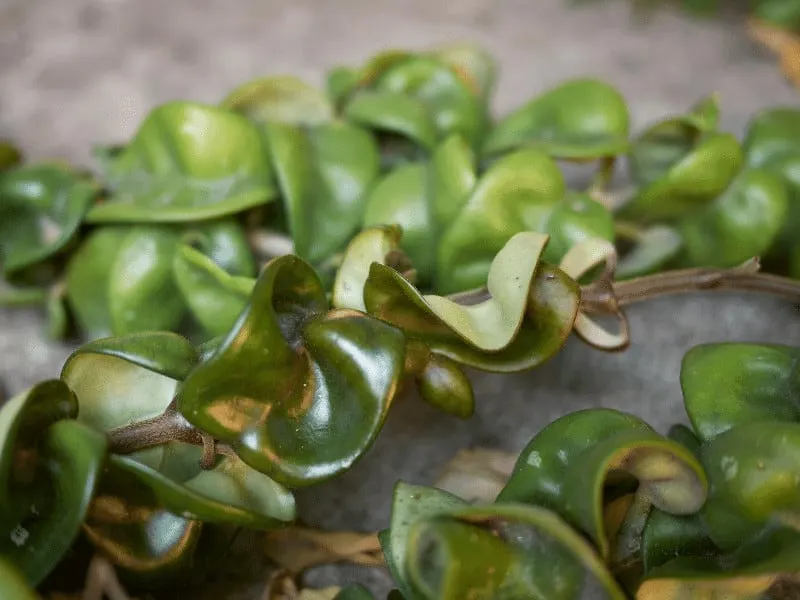
The Hindu rope plant is not poisonous. It is a hanging plant that looks great in a hanging planter. This plant grows best in partial light.
Care instructions:
Light: Bright indirect light.
Watering: Water every 14 days. Let the soil dry out in-between waterings.
Temperature: 60°F to 70°F (15.6°C – 21°C)
Humidity: 40-60%
Pot: Needs drainage.
Soil: Fast-draining light potting soil.
Fertilizer: Fertilize once a month in spring and summer with a liquid fertilizer.
38. Hens and chicks (Sempervivum tectorum)
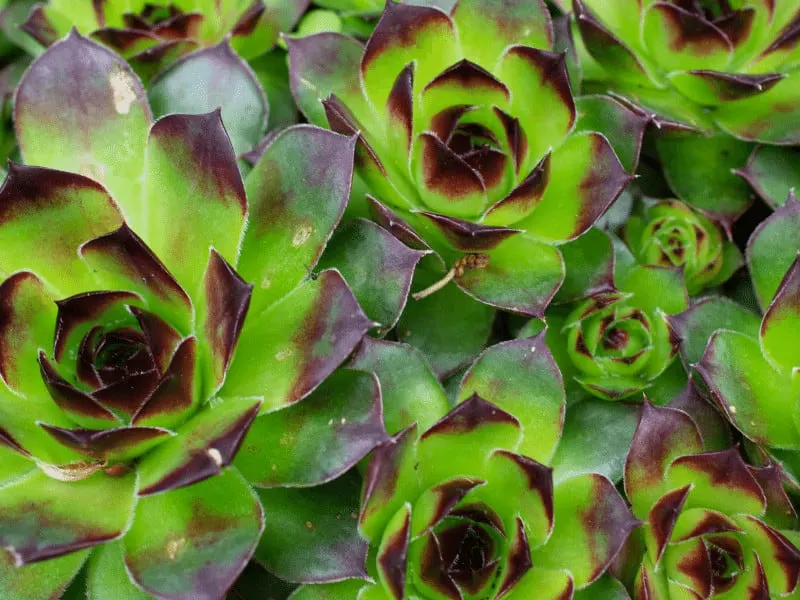
Hens and chicks are safe for humans as well as cats and dogs. They grow in rosettes. As succulent plants, they prefer succulent and cactus soil. Thrives in full sun.
Care instructions:
Light: Full sun
Watering: Needs little water. Water once a week.
Temperature: 65°F to 75°F (18°C – 24°C)
Humidity: 45-50%
Pot: Drainage is important. Terracotta is a great choice.
Soil: Succulent and cactus soil.
Fertilizer: Once every month. Use a liquid fertilizer at 1/4 strength.
39. Peacock Plant (Calathea makoyana)
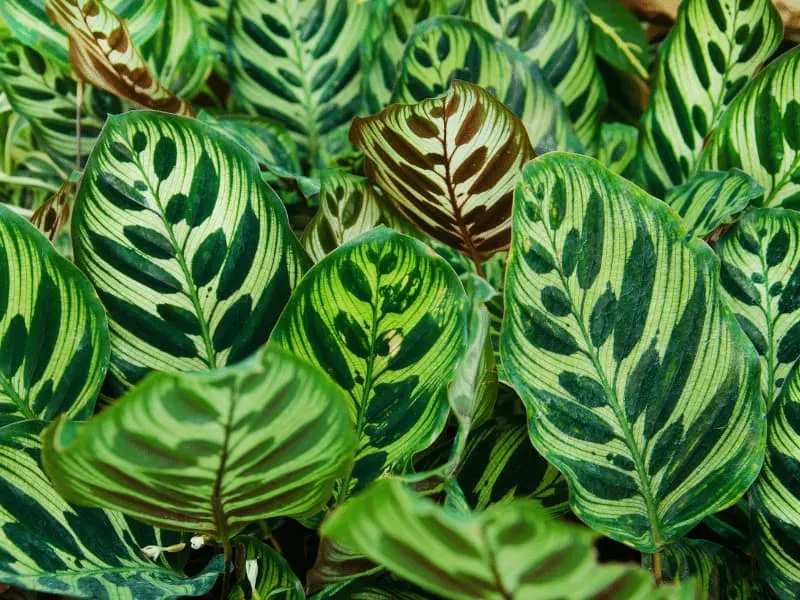
The Peacock plant, or Calathea makoyana is pet-friendly. They are not easy to grow. The striking foliage is what indoor gardeners are attracted by.
Care instructions:
Light: Bright indirect
Watering: Water every seven days.
Temperature: 65°F to 75°F (18°C – 24°C)
Humidity: 60-80%
Pot: Pot with potting holes.
Soil: A soil that retains moisture but is well draining. A mix of perlite, peat, and sand is optimal.
Fertilizer: Fertilize every 2-4 weeks using a fertilizer high in nitrogen.
40. Banana tree (Musa acuminate)
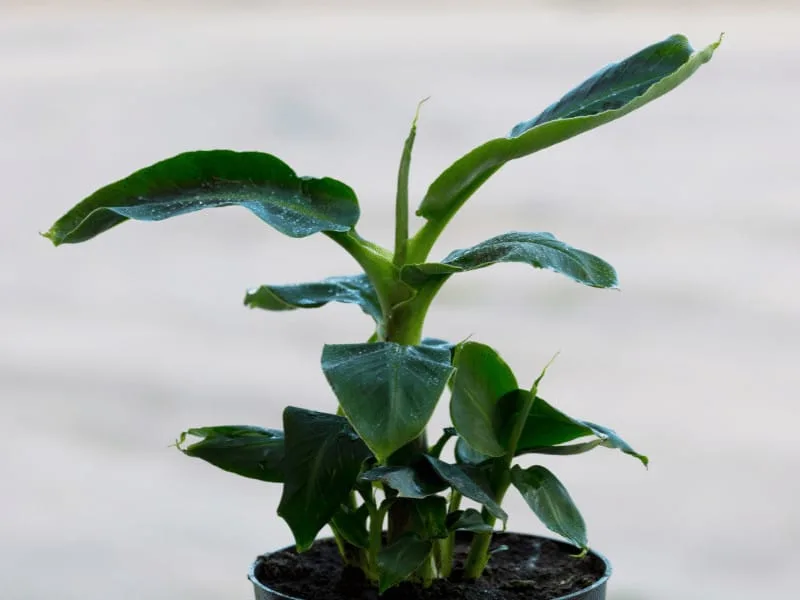
The Banana tree is non-toxic to horses and cats. Banana trees can be grown indoors but prefer high light levels. They will grow striking foliage. A fun fact about the banana plant is that it is grass and not a tree.
Care instructions:
Light: Plenty of bright light
Watering: Water weekly.
Temperature: 65°F to 75°F (18°C – 24°C)
Humidity: 50-70%
Pot: Pot with drainage.
Soil: Acidic soil with a pH of 5.5-6.5
Fertilizer: Heavy-feeders. Fertilize monthly using a balanced fertilizer.
Houseplants NOT Safe For Cats
- Monstera adansonii contains calcium oxalates and is not safe for cats.
- Dracaena trifasciata contains saponins and is not safe for cats
- Begonia maculata contains soluble calcium oxalates and is toxic to cats
- Alocasia wentii is highly toxic for cats due to calcium oxalates
- Philodendron birkin is toxic to cats as it contains calcium oxalates.

Daniel has been a plant enthusiast for over 20 years. He owns hundreds of houseplants and prepares for the chili growing seasons yearly with great anticipation. His favorite plants are plant species in the Araceae family, such as Monstera, Philodendron, and Anthurium. He also loves gardening and is growing hot peppers, tomatoes, and many more vegetables.

